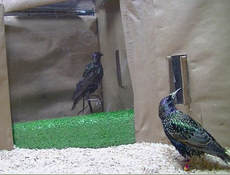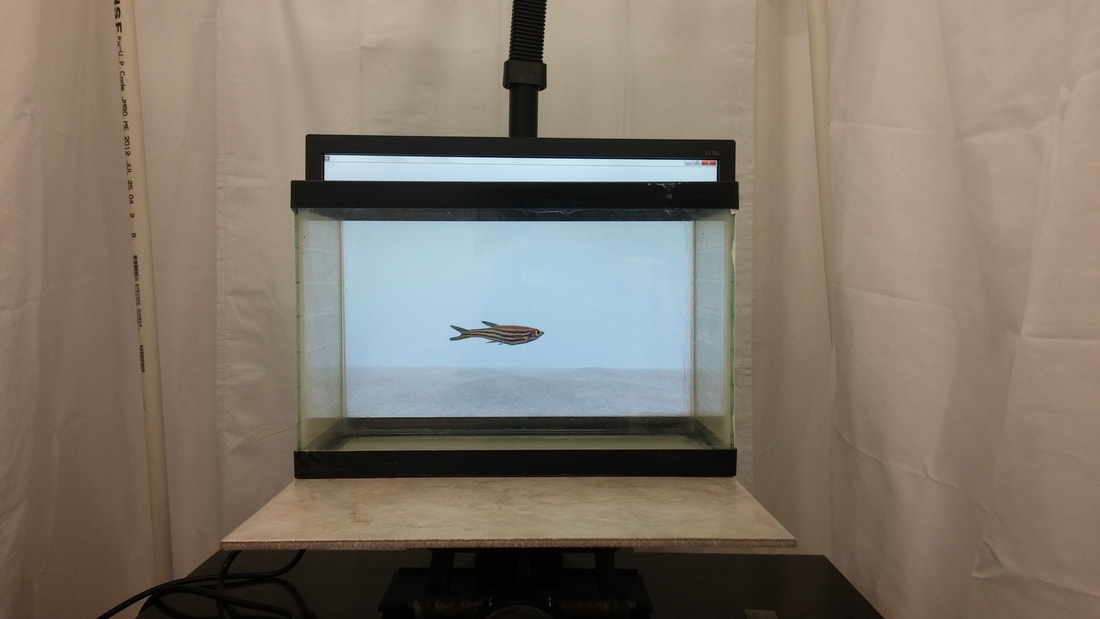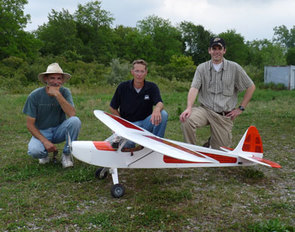|
Research interests
The lab is currently focused on two main research areas (more details below): - The evolution of visual systems and behavior (i.e., foraging, antipredator, mating, social) in vertebrates. - Strategies to solve human-wildlife interactions (protected areas, airports, wind and solar facilities, urban areas, etc.). We also have broad interests in behavioral ecology (e.g., social behavior, antipredator behavior), sensory biology (e.g., visual and acoustic communication), animal ecology (e.g., patterns and processes underlying the spatial and temporal distribution of animal populations and communities), and conservation ecology (e.g., endangered species). We welcome students with various research interests as our lab is highly inter-disciplinary. |
The lab uses a powerful combination of physiological, anatomical, and experimental tools, which place us in a unique position to understand the relationship between vision and behavior from a truly multidisciplinary perspective (please, see details of our methodological approaches below).
- Research area I: The evolution of visual systems and behavior
We tackle the general question of how perception shapes behaviors within and between species. This is a fundamental question given the variability in the sensory systems and behaviors of species living in different environmental conditions. The visual physiology literature on vertebrates generally makes predictions about how different types of visual configurations should influence behavior; however, many of those predictions go untested. Simultaneously, the behavioral ecology literature makes assumptions as to the configuration of the visual systems of vertebrates; however, many of these assumptions are generally untested (Trends in Ecology and Evolution 19: 25-31). Consequently, there is limited cross-talk between visual physiologists and behavioral ecologists, which prevents us from understanding the sensory and behavioral mechanisms involved in the evolution of important ecological processes, such as predator-prey interactions, mate-choice, etc. In short, my research intends to bridge this gap.
Currently, we are focused on (1) the evolution of the visual system of vertebrates, and particularly birds, and (2) how the configuration of the visual system (e.g., visual acuity, color vision, temporal visual resolution, etc.) influences behaviors of fitness relevance (foraging, predator avoidance, mate choice, grouping). To accomplish this, we use a multi-pronged approach that includes: (a) developing novel conceptual frameworks that integrate sensory physiology into behavior to generate predictions about the evolution of vision-behavior strategies under different ecological conditions, (b) developing new tools and methodological procedures to standardize the collection of comparative data, (c) gathering data on visual and behavioral traits across species that are good models for comparative work, and (d) using these comparative datasets to map out the avian visual sensory space and how different visual dimensions relate to one another, determine the role of phylogenetic, ecological, and social factors in the evolution of these visual traits, and establish how vision has influenced the evolution of different behavioral strategies.
This research has implications for understanding how animals adapt to different micro-habitats, how predators and prey coevolved sensory adaptations to enhance their mutual detection, the evolution of sociality, the mechanisms behind sexual selection, and the sensory basis of individual differences in behavior.
- Research area II: Strategies to solve human-wildlife interactions
More than 50% of the human population now lives in cities and suburban areas. Urban sprawl has increased the chances of humans interacting with wildlife under different scenarios. For instance, urbanization increases fragmentation effects, which reduces the suitability of remaining habitat fragments for wildlife. Recreational activities are increasing in areas of conservation concern (e.g., hot-spots), which may increase human disturbance effects, reducing the ability of wildlife to use and persist in protected areas. Airports provide habitat for many bird species; however, they also increase substantially the chances bird-aircraft collisions or bird strikes, like the one that happened in the Hudson River in January 2009. Additionally, birds are colliding with buildings, wind turbines, solar panels, power towers, etc.
Therefore, it has become increasingly important for conservation practitioners to manipulate the behavior of species of concern. Our research is focused on developing novel visual stimuli tuned to the visual system of a given species that would attract or repel individuals in the short- and long-terms, ultimately minimizing the risk of collisions and facilitating the coexistence of humans and wildlife.
To develop these novel stimuli, we follow a bottom-up approach. We first characterize key properties of the visual system of the target species to narrow down sweet-spots (i.e., areas of the sensory space with the highest stimulation of the visual system). We then build stimuli around those sweet-spots and assess the types of behavioral responses associated with them (attraction, avoidance, neutral). We then test the stimuli in aviary experiments before running field tests at different scales (patch selection, habitat selection). We are ultimately interested in the overall effects of these novel stimuli at the population (survival and reproduction) and community (different species in the same and different guilds) levels.
If you are interested in reading explanations of our most important research findings, please visit this page.
We tackle the general question of how perception shapes behaviors within and between species. This is a fundamental question given the variability in the sensory systems and behaviors of species living in different environmental conditions. The visual physiology literature on vertebrates generally makes predictions about how different types of visual configurations should influence behavior; however, many of those predictions go untested. Simultaneously, the behavioral ecology literature makes assumptions as to the configuration of the visual systems of vertebrates; however, many of these assumptions are generally untested (Trends in Ecology and Evolution 19: 25-31). Consequently, there is limited cross-talk between visual physiologists and behavioral ecologists, which prevents us from understanding the sensory and behavioral mechanisms involved in the evolution of important ecological processes, such as predator-prey interactions, mate-choice, etc. In short, my research intends to bridge this gap.
Currently, we are focused on (1) the evolution of the visual system of vertebrates, and particularly birds, and (2) how the configuration of the visual system (e.g., visual acuity, color vision, temporal visual resolution, etc.) influences behaviors of fitness relevance (foraging, predator avoidance, mate choice, grouping). To accomplish this, we use a multi-pronged approach that includes: (a) developing novel conceptual frameworks that integrate sensory physiology into behavior to generate predictions about the evolution of vision-behavior strategies under different ecological conditions, (b) developing new tools and methodological procedures to standardize the collection of comparative data, (c) gathering data on visual and behavioral traits across species that are good models for comparative work, and (d) using these comparative datasets to map out the avian visual sensory space and how different visual dimensions relate to one another, determine the role of phylogenetic, ecological, and social factors in the evolution of these visual traits, and establish how vision has influenced the evolution of different behavioral strategies.
This research has implications for understanding how animals adapt to different micro-habitats, how predators and prey coevolved sensory adaptations to enhance their mutual detection, the evolution of sociality, the mechanisms behind sexual selection, and the sensory basis of individual differences in behavior.
- Research area II: Strategies to solve human-wildlife interactions
More than 50% of the human population now lives in cities and suburban areas. Urban sprawl has increased the chances of humans interacting with wildlife under different scenarios. For instance, urbanization increases fragmentation effects, which reduces the suitability of remaining habitat fragments for wildlife. Recreational activities are increasing in areas of conservation concern (e.g., hot-spots), which may increase human disturbance effects, reducing the ability of wildlife to use and persist in protected areas. Airports provide habitat for many bird species; however, they also increase substantially the chances bird-aircraft collisions or bird strikes, like the one that happened in the Hudson River in January 2009. Additionally, birds are colliding with buildings, wind turbines, solar panels, power towers, etc.
Therefore, it has become increasingly important for conservation practitioners to manipulate the behavior of species of concern. Our research is focused on developing novel visual stimuli tuned to the visual system of a given species that would attract or repel individuals in the short- and long-terms, ultimately minimizing the risk of collisions and facilitating the coexistence of humans and wildlife.
To develop these novel stimuli, we follow a bottom-up approach. We first characterize key properties of the visual system of the target species to narrow down sweet-spots (i.e., areas of the sensory space with the highest stimulation of the visual system). We then build stimuli around those sweet-spots and assess the types of behavioral responses associated with them (attraction, avoidance, neutral). We then test the stimuli in aviary experiments before running field tests at different scales (patch selection, habitat selection). We are ultimately interested in the overall effects of these novel stimuli at the population (survival and reproduction) and community (different species in the same and different guilds) levels.
If you are interested in reading explanations of our most important research findings, please visit this page.
Methodological approaches
Our lab is highly interdisciplinary, as we do research that goes from the cellular level to the community level, with an emphasis on the organism. Therefore, we have several methodological approaches to answer our questions in a comprehensive manner.
LABORATORY
Retinal topography and visual acuity: We study how the density of retinal ganglion cells varies in different parts of the retina (retinal topography) in order to identify retinal specializations that may be used while scanning. We use a retinal wholemount technique to extract and prepare the retinas that are later stained with cresyl violet or DiI. We also estimate visual acuity based on eye size and the density of retinal ganglion cells.
Our lab is highly interdisciplinary, as we do research that goes from the cellular level to the community level, with an emphasis on the organism. Therefore, we have several methodological approaches to answer our questions in a comprehensive manner.
LABORATORY
Retinal topography and visual acuity: We study how the density of retinal ganglion cells varies in different parts of the retina (retinal topography) in order to identify retinal specializations that may be used while scanning. We use a retinal wholemount technique to extract and prepare the retinas that are later stained with cresyl violet or DiI. We also estimate visual acuity based on eye size and the density of retinal ganglion cells.
Avian color vision. We have a microspectrophotometer and a focal plane spectrometer, which allow us to establish the peak absorbance of the different visual pigments and oil droplets in the avian retina (including the ultra violet). Additionally, we map the distribution of different types of photoreceptor in the retina by identifying the oil droplets under bright light and fluorescent light. These techniques are essential to better understand the physiological basis of color vision.
Temporal visual resolution. We use electroretinography to measure flicker fusion frequency, which is a proxy of the ability of the retina to process visual stimuli at different temporal frequencies.
Visual fields. We use an ophthalmic reflex technique to estimate the 3-D distribution of the different portions of the visual fields of birds (binocular, peripheral, blind area, and projection of the pecten).
Perceptual modeling. We use chromatic and achromatic contrast models to determine the degree to which visual stimuli (predators, prey, mates) stand out from the visual background. We parameterize these models with information on the visual system of our study species that we collect
Visual attention. We have developed the very first eye tracker to measure how small birds pay attention to objects in their visual field with both eyes simultaneously. If you are interested in using our eye tracker for your research, please, contact us.
|
Video showing a starling being exposed to a (virtual) predator approach at regular and slow speeds. The red dot indicates the projection of the fovea (center of visual attention) into the visual scene.
|
Semi-natural experiments. We conduct experiments in semi-natural conditions (i.e., enclosures set up outdoors) because they allow us to manipulate factors of interest while controlling for confounding variables and to record the behavior of animals (e.g., scanning, foraging, escape, preference) with multiple cameras.
Playback of visual stimuli. We use multiple systems to study the behavioral responses of live animals to different types of stimuli. We have developed robotic birds using bird skins and micro-servos that can move in different directions (body up and down, head movement, body orientation). We have also used a predator robotic system that mimics an aerial predator. Finally, we have used different types of video playbacks.
Robotic bird in action
Field work. We do considerable field work to survey bird populations and study the behavior of individuals in natural conditions (mating displays, anti-predator strategies, foraging behavior, tolerance to human disturbance, etc.). We work with common as well as endangered species (e.g., South Western Willow Flycatcher, Belding's Savannah Sparrow). Locally, we do a lot of our field work at the Ross Reserve (check out this beautiful bird's eye view of the Ross Reserve)
Proudly powered by Weebly



















